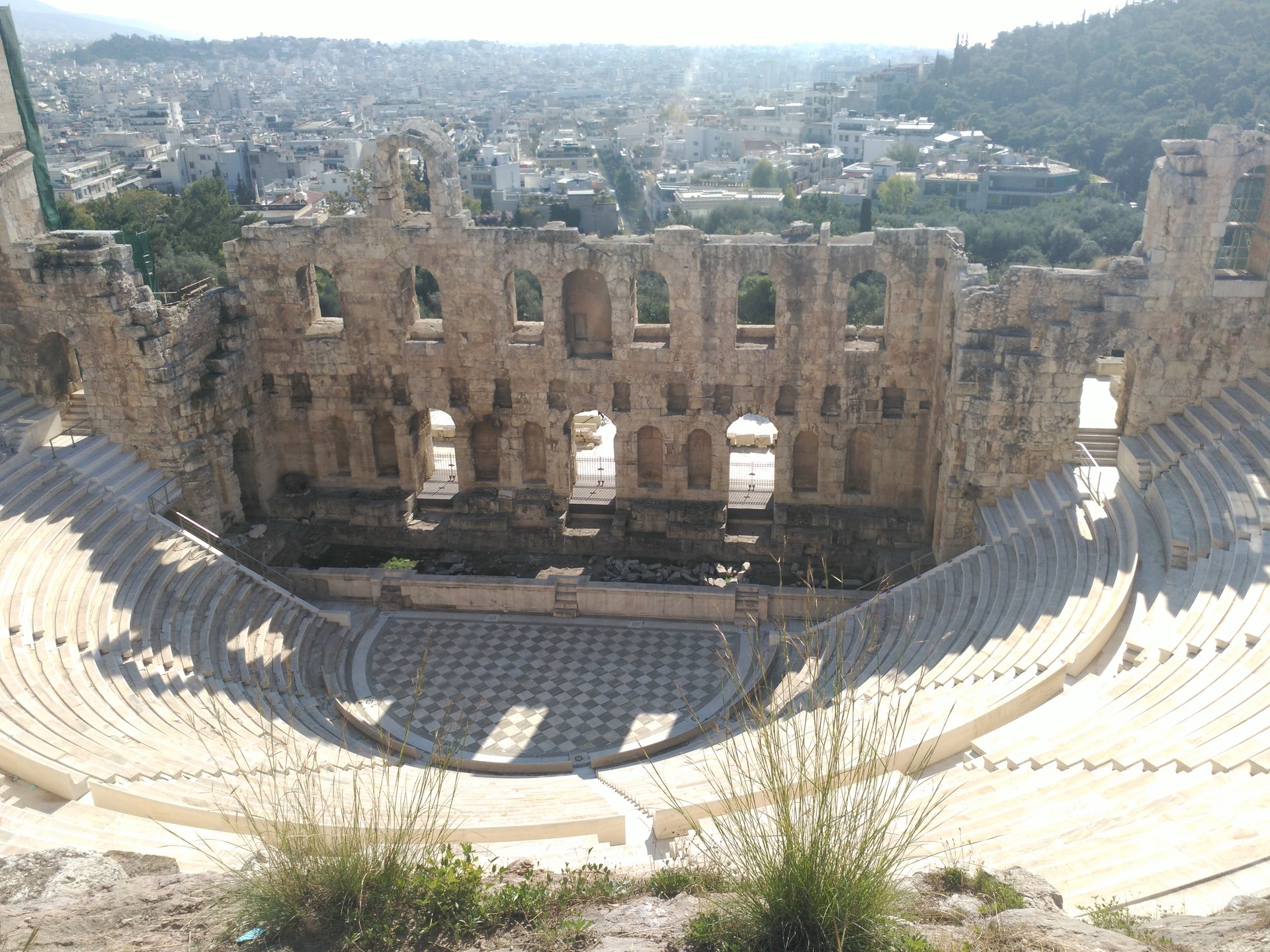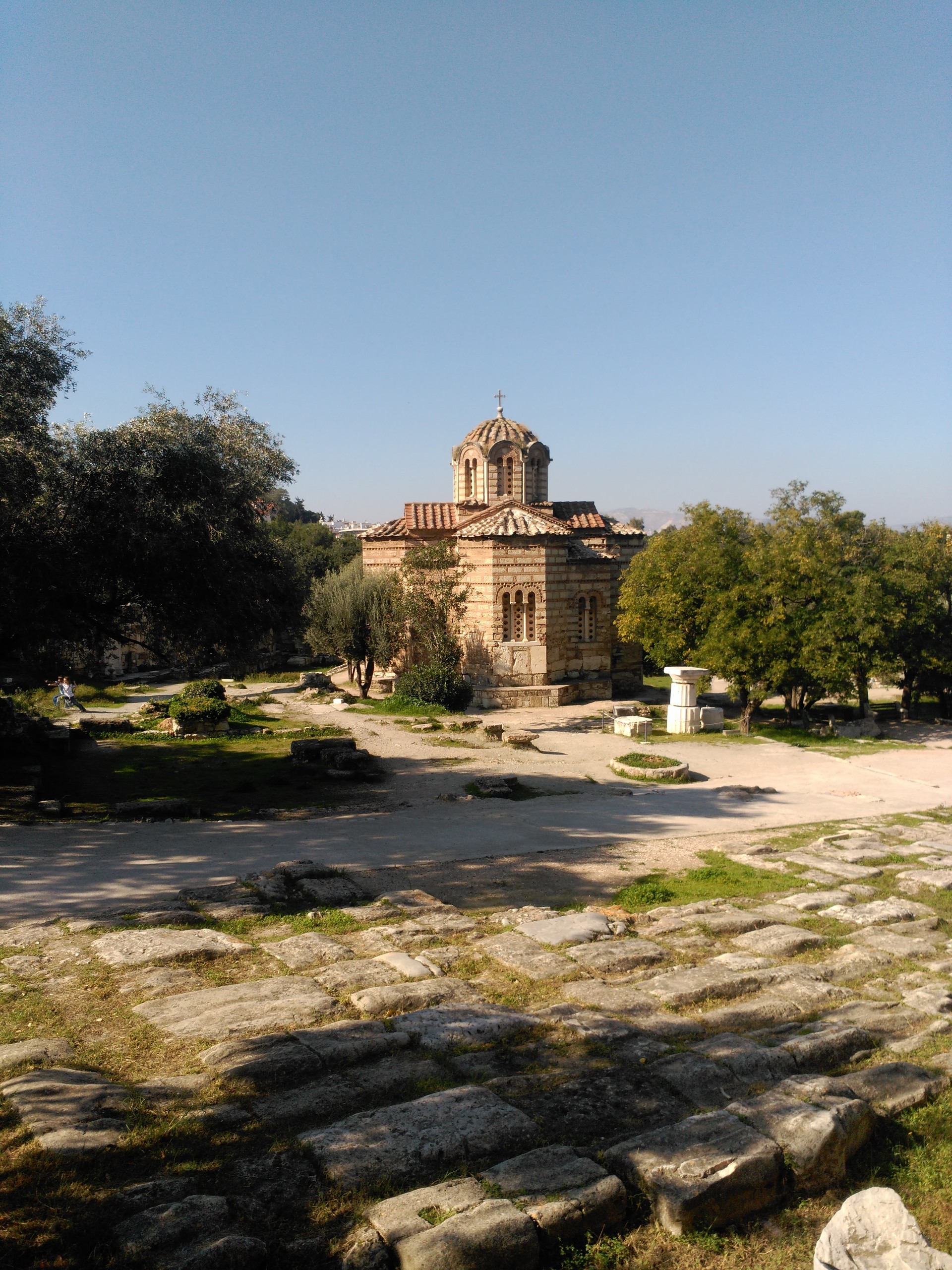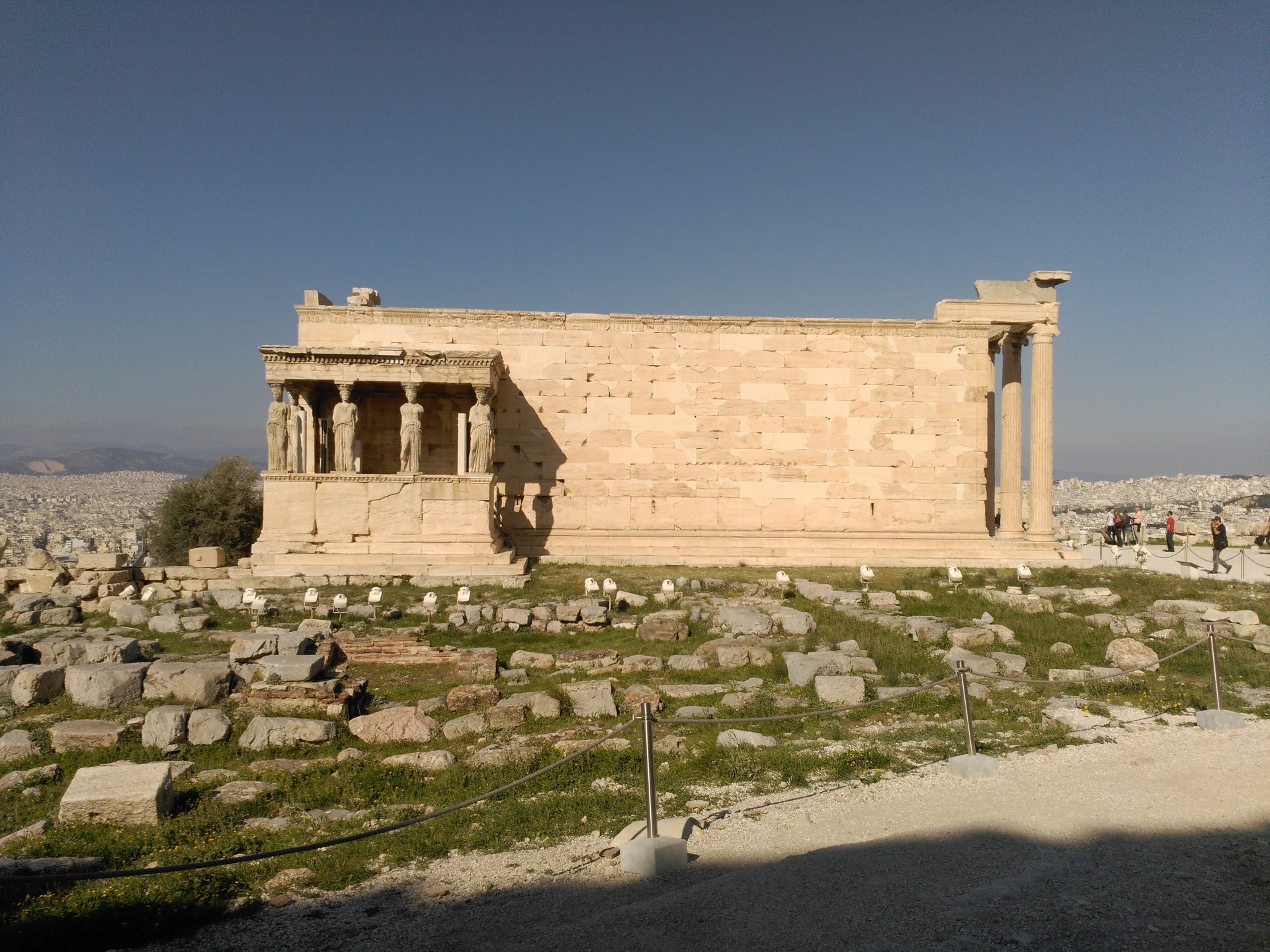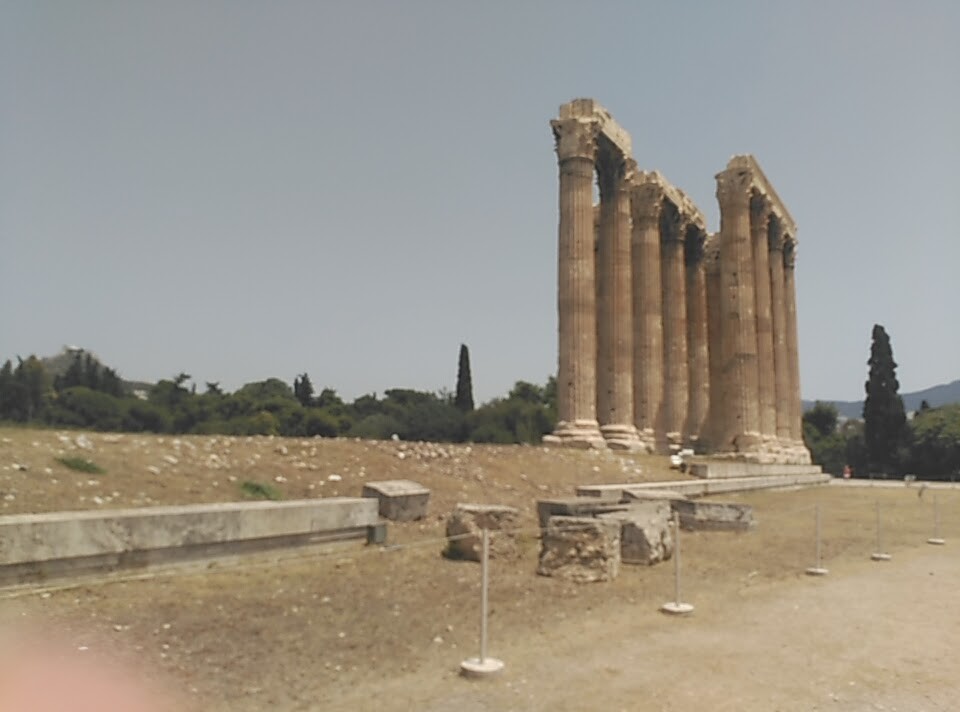Everyday Tourism in Athens
I can't believe that it took me a month after arriving until I dedicated myself to seeing the tourist sites and places of the city. Later I discovered that I wasn't the only one waiting for someone to keep me company and to do the whole tour.
Athens, as you know, is a city full of history, and the neighbourhoods surrounding its most important sites are well prepared for the onslaught of tourists it receives, especially when the weather is good. These are the neighbourhoods of Plaka, Monastiraki, Thissio and Syntagma. These three are usually riddled with shops, restaurants and typical coffee shops with a price that are through the roof, but the best bet is to take a walk and get lost amongst their lovely streets, houses and alleys, which is always free.
In addition to pass through residential neighbourhoods to areas full of light and parks, you may get to discover the little secrets that aren't found on maps.

Monastiraki
This square is the border between Omonoia, the central district of chaos, and the beginning of the maintained tourist sites.
As soon as you leave, you'll see an Orthodox church right in the middle of the square, which is rather sunken in the ground, given that it's quite old, which you can enter. As well as this little relic of religion there are two more in the nearby streets, one on Ermou Street (going up towards Sytnagma) and another on Athens Street, towards Omonoia. The latter is really discreet, and perhaps that is why it gives a touch of historical importance to the street, now full of second-hand shops and cars.
- Emperor Hadrian's Library: In addition to the tourist market, the square leads to an open and pedestrian street where the first sites are located: the library of the Emperor Hadrian and the ruins of the surrounding buildings. Even in the middle of the same squar, you can see some stained glass windows on the floor, that show you the remains underneath that which we step on every day. If you follow these streets you'll begin to climb towards the Acropolis and the natural park will be at your feet: this is the Plaka neighborhood.
-
Antiques Market: Enter the street of the market, to the right of the station. Although it seems overwhelming, it has certain hidden corners of interest. For example, at less than 100 metres you will see that a square opens to your right that is colonised by antique stalls. These establishments keep relics from the time of the Ottoman Empire and the dictatorship, the recent history of Athens that very few decide to keep in mind today. They also keep objects that came from Albania, after its recent invasion (30 years ago).
- Book shops: If you walk on a little further you'll enter Thissio, and avoiding the pubs you'll find a small square, like a courtyard, with bookshops. Among these you'll find one of the city's oldest bookshops whose towers of books rise to its roof. The dependants know their classification perfectly and you'll find all kinds, even those written in other languages.
But before I continue, I want you to know that Monastiraki is not just a historic neighbourhood just because it was built around monuments.
Plaka
Passing by Hadrian's Library, going up to the left, you enter the neighbourhood that's considered the most beautiful and expensive in the city. It includes all the area that surrounds the Acropolis, marking out the area of Syntagma and Monastiraki. The climb is steep, but it is worth getting lost among its labyrinthine streets and neoclassical houses.
My recommendation is that you take the road below, because, although it costs to go up the stairs and ramps, you'll be able to appreciate those streets that are often empty and forgotten, but in which there are galleries and art shops and books that can't be found anywhere else.
- Reservoir Parks: On the climb and once up there you can enter the natural park that unites all the remaining sites, and among which is the ancient Agora of Athens. From all the ruins that they've collected, they've built a museum of statues and classical art. For all these areas there is a single ticket with which, once purchased, you can use to enter any of the sites. You can buy it at any ticket office in any gate. It costs €12 for adults, and is free for students, children, and seniors. It's not valid for the Acropolis.
- Orthodox Church (Byzantine art): Within one of the areas of the park there's also a small Orthodox church, which had 100 year old preserved frescoes. Byzantine art is considered the best in the history of Greek art, because they worked the hardest, perhaps they were influenced by religion. Being orthodox, you see more austerity and bright, happy colours in their works, as opposed to the melancholic realism of Catholic art. Another curiosity is that Pablo Picasso, one of the most famous artists in Spain and the world, was inspired by this type of art when developing his Cubist style. That is why his figures seem two-dimensional, something characteristic of these frescoes and images, although what Picasso deprived his paintings of realism and depth by including several perspectives of the same figure.
-
Temple of Hephaestus: In this same area there is also a small temple dedicated to Hephaestus, the blacksmith God who made the mighty Zeus's lightning bolts. It is very well preserved and seems to be complete, so don't forget to have a look.
- Entrance to the Acropolis: If you follow the path through the park you'll soon find the entrance to the Acropolis, the most important and visible site from many points of the city.

A little curiosity about Plaka is its name. In Greek, πλακα means "grace", often in an "ironic" sense. The name of the neighbourhood, which is considered to be the District of the Gods because of its proximity to ancient temples, has nothing to do with the use of Greek colloquial language, but it certainly has plaka... right?
The Acropolis
Included within this neighbourhood is the most important site. To enter you must pay a separate fee, which costs the same as the ticket for the other areas: €12 adults, free for students and seniors.
* The first Sunday of each month there's free entry for everyone. *
For starters, Acropolis in Ancient Greek means "city of the highest point", so everything you've seen and what you're about to discover is part of an ancient citadel. Inside you'll not only visit the huge Parthenon that is easily seen from the modern city, but also the theatre of Dionysus and the ancient Temple of Athena.
Myth: Since you are going to visit the temple that honours the goddess of wisdom, you must know that Athens is named after her, because as the myth tells it was after her struggle and victory against the sea god Poseidon that the city became under her protection and, thus, adopted her name.
In addition to the walk, there's a viewpoint from which you can admire the surroundings, indicated by a large Greek flag (historical pride in a single image). Between photos and readings the visit takes time, but it's very enriching. It's even common to see arts students who, with free admission, take advantage of entering the sites and spend the day drawing the columns and copying the design of the monuments.

When leaving, if you walk to the right you may discover some stone stairs. If you follow them you will be taken to a huge rock where people usually sit, beer in hand, to admire the views and rest. If you arrive at nightfall you can enjoy seeing the city light up as the sky darkens, including the Acropolis, which lights up as if it had its own sun.
Thissio
This neighbourhood is small and it's limits are unclear, but it's also very popular because of its proximity to tourist spots, its cleanliness, and its nightlife. It's a station on the green line (1), and I'll start by saying that I was surprised to learn that Thissio is the old way of saying "sacrifice", so perhaps it was generally avoided back in the day.
Today, the station is at the beginning of a large pedestrian street that leads to the Acropolis. In it there are many elegant cafés and terraces with views and tranquillity. There's also a summer cinema (a little desolate at these heights).
- Natural reserve park: Following this street, Apostoliou Pavliou, you will find on your right another natural park with paths climbing it. You can reach some ancient Orthodox churches and, among its sites, the prison of the philosopher Socrates. As far as I know from his story, they say that Socrates did not fear the end when he was condemned to death, and when all his friends cried over the news and urged him to flee he told them "I do not understand the reason for your crying, as honestly it is good news. If it is true that there is something after this life, I will be going to a much better place than this one. If it is not true, I will only become nothing, so there will be no suffering that is worthy of your grief. "
- Acropolis Museum: On the left is the Acropolis again, and a little further on is the recently built Museum. It's worth visiting (also it's free for students) because it keeps safe the most important pieces that were lost in the debris. In addition, it tells the myths that are behind the constructions and the evolution of the history of the country.
*Spanish Embassy: the Embassy building is past the Acropolis Museum on the right. They'll help you with no problems and you can go in case of any emergency. You'll distinguish it by its Spanish flag, of course.
Syntagma
This is undoubtedly one of the most crowded areas at all times every day. It is the main centre of the city and the seat of the Houses of Parliament. That's where its name comes from, since Syntagma means "constitution". When you leave the subway station (blue line (3)) you'll find a large square with many hotels, restaurants, franchises, shops, shouting... and if you turn around, there's the great Parliament.
- Parliament: In front of this emblematic building there's a change of guard for those who are normally attentive tourists. The soldiers wear the old uniform, consisting of a skirt and very ostentatious shoes. Taking photos is allowed and you can get closer as long as you don't pass the limits of the entrance.
-
Gardens: Walking to the right without entering the streets are the public gardens, a park that can be compared to the Retiro in Madrid, with green areas, fountains, and even a small farm with little animals. If you don't get lost among the trees, you may come out in front of the two sites that are yet to be mentioned, which will be easier to find if you walk just outside the parks: the Temple of Zeus and the old Olympic Stadium.
- Temple of Zeus: Entry to the Temple of Zeus is included in the ticket that is valid for the rest of the sites, and includes a visit to what remains of its tremendously tall columns, several ruins of surrounding buildings, and Emperor Hadrian's arch.
-
Olympic Stadium: The Olympic Stadium requires you to pay for your ticket, it's no more than €2 if I remember correctly. It is, as its name suggests, an ancient Greek stadium, so you can walk through the stands and go under them, in the spaces where athletes used to get ready. A little known fact is that, during the Marathon race, they open the doors to the public to receive the runners who must reach this point to finish the race. At this time you can see the Stadium full of life and all for free.

It's too much for a one-day tour/strong>, so I hope you spread it out over several weekends and spend it with people who can tell you more curious details about the history that is not general knowledge, or with those that you can tell details to!
Photo gallery
Content available in other languages
- Español: Turisteo para todos en Atenas
Want to have your own Erasmus blog?
If you are experiencing living abroad, you're an avid traveller or want to promote the city where you live... create your own blog and share your adventures!
I want to create my Erasmus blog! →





















Comments (0 comments)